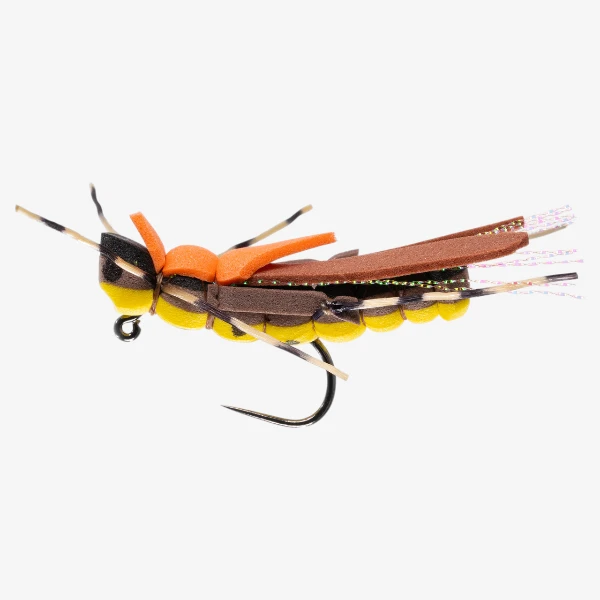Description
Dave’s Hopper, created by the legendary fly tyer and angler Dave Whitlock in the 1950s, is one of the most influential and widely used grasshopper patterns in fly fishing history. Designed to imitate large, buoyant hoppers found in meadows and riverbanks, this pattern was born out of Whitlock’s desire to create a more realistic and durable alternative to the traditional Muddler Minnow-based hopper patterns of the time.
Dave’s Hopper introduced several innovations: a spun and clipped deer hair head for buoyancy and a realistic profile, knotted rubber legs for lifelike movement, and a durable, segmented body built with a blend of natural and synthetic materials. The yellow body and tan wing combination was designed specifically to mimic common species of western and midwestern hoppers, though the pattern has proven effective in trout waters across the country.
Unlike slimmer, spring creek hoppers like the Letort Hopper, Dave’s Hopper is meant to plop—it lands with a splash, attracting aggressive trout in faster water and windy conditions. This pattern helped popularize the use of terrestrials as a summer staple and remains a must-have for anglers fishing meadows, banks, and riffles from Montana to the Ozarks. Its durability, visibility, and fish-attracting movement have made it a timeless classic.
Pro Tip
Bank Bomber: Cast tight to grassy undercuts or overhanging brush and let it land with an audible “plop.” The sound mimics a real hopper falling in and often triggers immediate strikes. Let it sit motionless for a few seconds before twitching it once—just like a disoriented insect.
Reviews
0
0 Ratings
0 Reviews
Recipe
Hook: TMC 5212 or Dai-Riki 280 (2XL dry fly hook), sizes 8–12 Thread: 6/0 or 140 denier Tail: Deer hair (short, stiff clump) Body: Yellow or tan synthetic or natural dubbing (segmented) Rib: Fine brown hackle (palmered over body) Wing: Turkey quill section or mottled synthetic sheet, treated with flexible cement Legs: Knotted rubber or pheasant tail fibers (tied at sides) Head: Spun and clipped deer hair, bullet-shaped Hackle Collar: Optional – brown hackle wrapped behind the head


